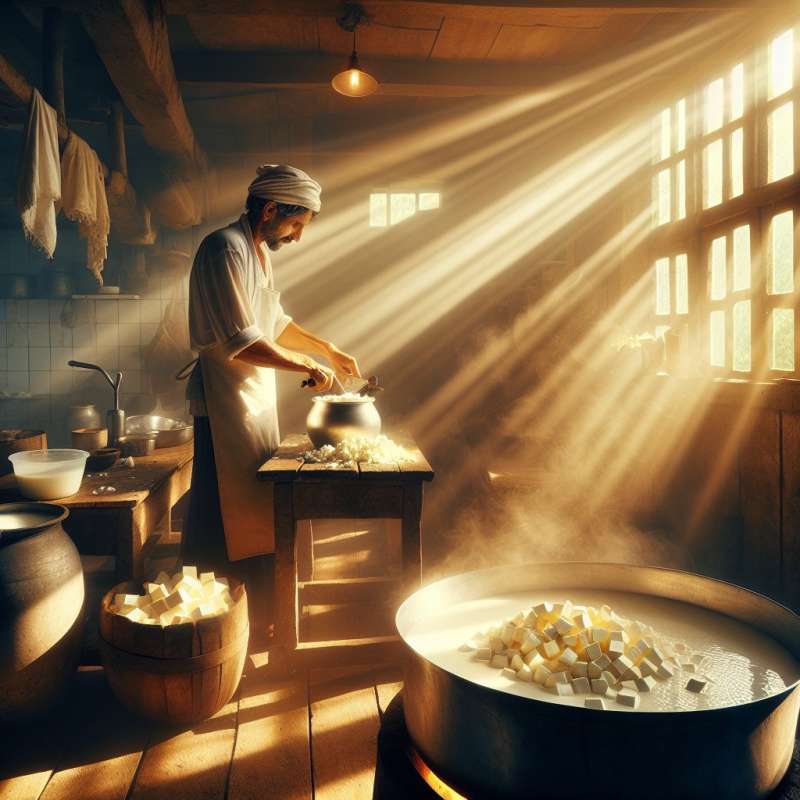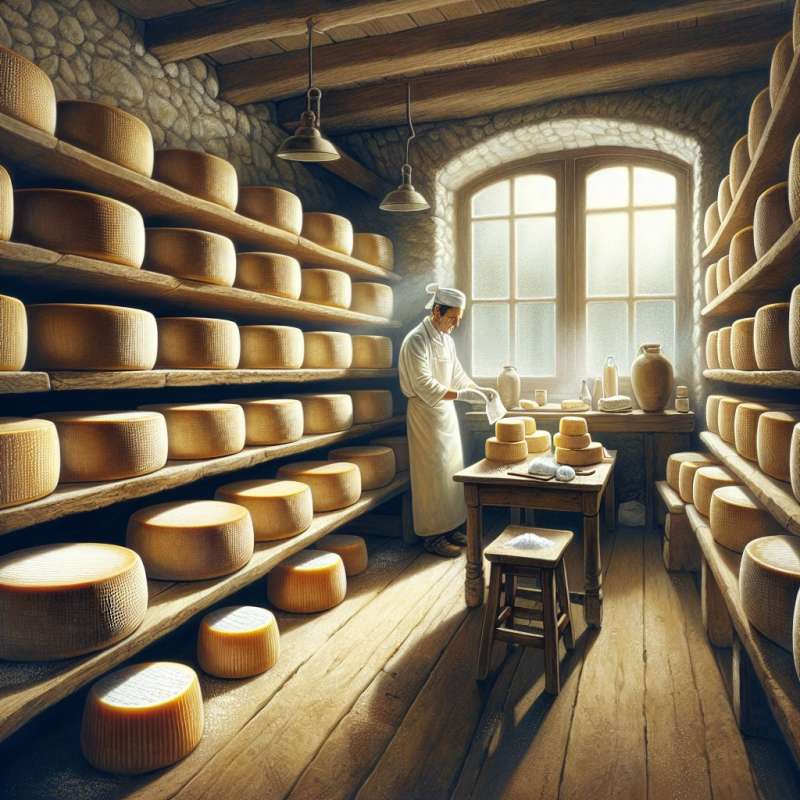
Prepare Ingredients and Tools
Gather fresh milk, starter culture, rennet, and salt. Ensure tools like a cheese press, thermometer, and molds are sterilized. Did you know? Using raw milk adds complex flavors, but requires careful handling to prevent unwanted bacteria.
Culturing the Milk
Heat milk to 85°F and add starter culture. Maintain this temperature for an hour to develop acidity. Interesting fact: The type of starter culture can significantly alter the cheese's flavor profile, from tangy to mild.
Coagulate and Cut Curds
Add rennet to the milk and let it set until firm. Cut the curd into small cubes. Fun fact: Cutting smaller curds leads to harder cheese, while larger curds result in a softer texture.
Cook and Press Curds
Heat curds slowly to 105°F while stirring. Drain whey and transfer curds to a mold. Press under weight for several hours. Did you know? The pressing time and weight influence the cheese's density and moisture content.
Aging and Storing Cheese
Salt the cheese and age it in a controlled environment, typically between 50-55°F with high humidity. Fun fact: Aging cheese can range from a few weeks to several years, dramatically enhancing flavor complexity.Unexpected Aging Result
Some cheeses, when aged over a century, develop such unique flavors that they are considered gastronomic treasures and sell for thousands of dollars per pound.
What does raw milk add?
Increases acidity
Complex flavors
Sterilizes tools
Company